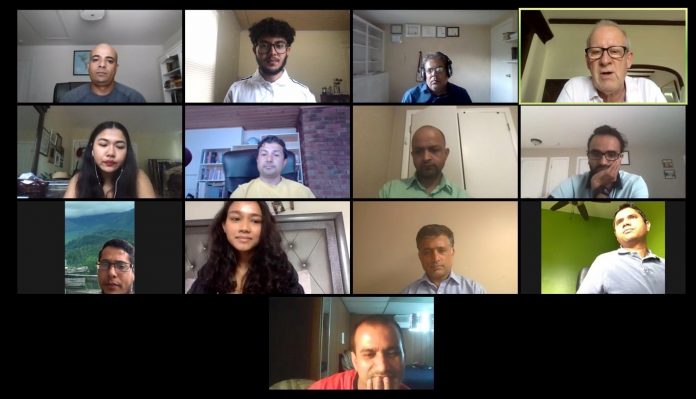All of humanity has been confused by the conflicting, unfolding and sometimes misleading messages regarding the pandemic–including my community, Bhutanese refugees who have resettled in America. Among some facets of the diaspora, language and educational barriers have made fear and anxiety more acute.
As a former Bhutanese refugee myself, I decided to focus my energies on a project to help inform the community and explain Covid and its implications in terms Bhutanese could understand.
I am one of the founders and editors of the Bhutan News Service (BNS), a media organization run by and for Bhutanese refugees since the mid-2000. The service was born in a refugee camp in Nepal, but shut down in January 2020 mainly due to lack of volunteers.
In the early days of the spread of the virus, when the BNS website was inactive, public health professionals and refugee stakeholders started contacting me in order to share information via the BNS Facebook page. That was one of the moments when I realized how important an ethnic-media outlet can be.
Inspired by the possibilities, I worked in the evenings and weekends to build a team dedicated to delivering science-based information to the public. Offers of help streamed in from people of all ages and professions.
By October, after months of virtual brainstorming and journalism training, the BNS was relaunched. Currently, we have 20-plus volunteers creating and publishing content for the site. We’ve published essays about the importance of wearing masks, staying fit during quarantine, the impact of COVID-19 on recent college graduates, as well as how to safely celebrate our important holidays–typically built around family gatherings and Hindu festivals–Dashain and Tihar.
Many of our volunteers, like me, have full-time jobs and families. Some attend college full-time. Some had already met and knew each other, others were new acquaintances. Yet, we soon became like a (virtual) family dedicated to sharing our experiences and important information in the service of protecting not just our community but far beyond. It was also fascinating to see how some volunteers continued working virtually even while they were quarantining after testing positive for COVID-19.
Aside from finding a pool of volunteers from within the community, we were also able to bring onboard two England-based media experts in the team to mentor and assist us. With everyone’s contribution, BNS was reborn.
Seeing the value that the relaunched BNS has had on those seeking reliable news and information has been inspiring. And working with so many volunteers whose only aim is the dissemination of facts to an information-poor audience makes me realize that despite the setback of the virus, new doors have opened providing a tremendous opportunity to inform the public debate, and, hopefully, in doing so, save lives.
The BNS website has had almost 170,000 hits since its re-launch on October 1. We average about 2,000 unique visitors a month. That puts BNS in a unique spot. And with the board and leadership involvement in the future strategic planning process, I am confident that we will now continue to provide this unique and valuable communications–and even, quite possibly, grow.
__
The author is Executive Editor of BNS — and this story was originally published by Smithsonian — National Museum of American History.

